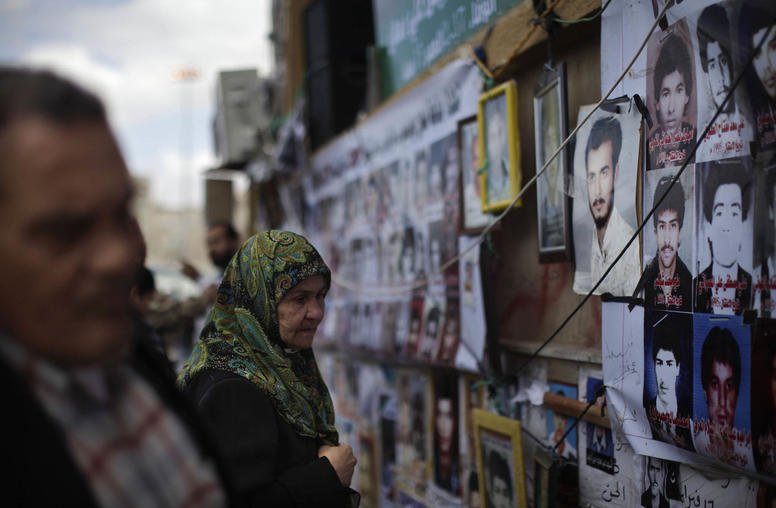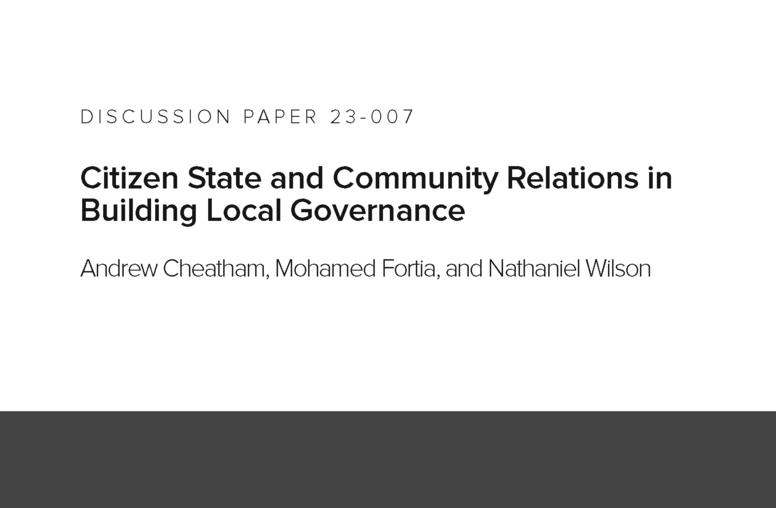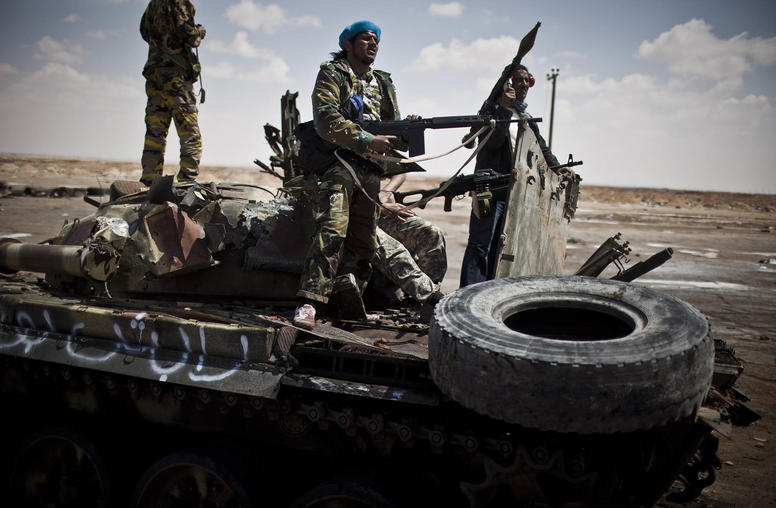The Way Forward: Building Libya’s New Security Forces
While the new Libyan leadership may come up with an interim security plan, which could include an international peacekeeping force, a long-term solution will be one of the biggest issues facing the new leadership.
September 13, 2011
The military and security forces under Col. Muammar al-Qaddafi now appear to be effectively dissolved or in tatters, presenting Libya’s new leaders with distinct challenges as they endeavor to build a professional security force required to keep the long-term peace. Security in Libya today is maintained by a patchwork of tribal groups in the outer areas and largely rebel forces and other groups in many of the cities. While the new Libyan leadership may come up with an interim security plan, which could include an international peacekeeping force, a long-term solution will be one of the biggest issues facing the new leadership.
The new leaders must ponder how to build an effective security force by answering fundamental questions about that force’s future role and mission, says USIP’s Bob Perito. What should a security force do? What threats does it protect against? Where will it operate? Who should train it? When the U.S. and other international partners plunged into building security forces in Iraq and Afghanistan, it did so without asking these kinds of questions, Perito says.
“What we did there is run in, forget the ministries, and then began training thousands and thousands of people,” he says.
The blank slate that is Libya’s security apparatus presents the international community with an opportunity to do it the right way. With Libya’s internal security being the primary concern, creating a security force would likely focus on a police or gendarme force capable of maintaining the rule of law, safeguard the plethora of weaponry Qaddafi left around Libya, and most important, protect the Libyan citizenry.
The most important thing is for Libya is to take a top-down approach to building that force, Perito says, and start to build the institutional capacity at the top based on the appropriate security model. An “institutional development mission” would also ensure that the security force Libya needs is the one it actually builds. Once that is established, training the rank-and-file should come afterward. “Training,” he says, “is the last thing.”
The potential for taking lessons from building security forces in conflict zones such as Iraq or Afghanistan are limited, he says. Iraq’s military, though essentially disbanded after the fall of Saddam Hussein, was able to draw from the military institutions of its recent past. Afghanistan is still very much a warrior culture that has embraced the creation of a professional military under NATO and the U.S. Libya may be different, and the Kosovo conflict stands to offer a more accurate historical model with which to compare, Perito says.
“It’s a post-conflict environment that is much more analogous to post-conflict environments like the Balkans, where the institutions that were in place before were decimated or dissolved by the conflict,” he notes. The physical damage in Libya from more than five months of NATO’s intense air campaign poses additional challenges.
The military under Qaddafi was thought to have had limited capabilities in the first place. Now it is all but gone.
In recent years, the Libyan armed forces were thought to be approximately 76,000 members, including an army of 50,000, a navy of 8,000 and an air force of about 18,000, according to “The Military Balance,” published in 2010 by the International Institute of Strategic Studies. Libya boasts another 40,000-person reserve, or “people’s militia.” The Qaddafi regime spent about 4 percent of its GDP on the armed forces, according to the World Factbook, compiled by the CIA, citing 2005 data.
But useful information about Libyan security forces is scant. Few outsiders really know much about the military or police force, how it operated or trained or even what its composition was before the air campaign began this spring. Experts suspect that Libya was a country with little respect for security institutions and instead allowed a strongman to rule through intimidation.
“I think the problem we all have is we don’t know a lot about all this,” Perito says.
Recruiting Libyans into a new security force could represent another big challenge. It’s unclear, for example, how many Libyans – even those who fought in the opposition in recent months – would even be interested in joining a new security force. Indeed, many of Libya’s freedom fighters will have what amounts to a “career decision” to decide if they want to join a future security force or return to their day jobs as shopkeepers, tradesmen or business people.
And some fighters may find they want to grab a bigger slice of the pie for themselves – in the form of a bigger job in government – rather than settle for a military job.
“Once people have had a taste of power, they really don’t want to go back to their hum-drum life,” says USIP’s Theodore Feifer.
But someone has to do it, Feifer says, and in Libya’s case, it won’t be members of the international community. It will be the Libyans. “All these things someone’s got to do,” he says. “It’s not the outsiders there who are in charge. Libyans are the ones who have to do it.”
Explore Further
- Countries and Regions: Libya
- Helping Libya’s New Leaders Move from Euphoria to Reform
On the Issues by Colette Rausch | August 24, 2011



